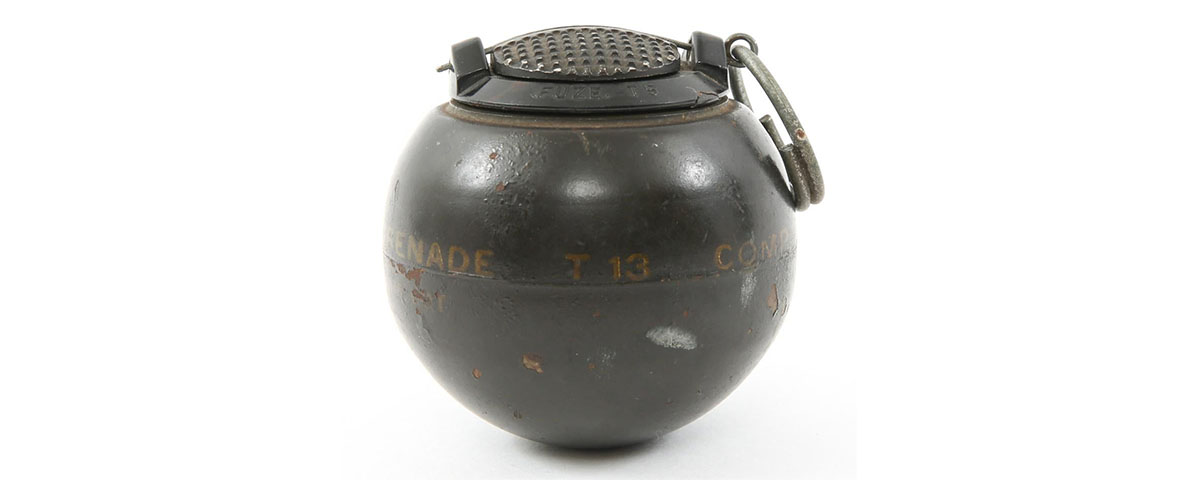Baseball. Considered America’s favorite pastime, it was assumed by the Office of Strategic Service (OSS) in 1944 that most draft-eligible men knew how to throw a fastball or, at the very least, could pitch a baseball with some accuracy.
Applying that logic, the OSS figured that if an American could throw a baseball, he could throw a grenade that was shaped like one.
The logic was sound. The grenade that was eventually developed, however, was not.
Working with the Army Ordnance Department and the Eastman Kodak Corporation, the OSS introduced the T-13 grenade early in 1944. Nicknamed “BEANO” by American soldiers, the new grenade was nine and a half inches in circumference and weighed five or so ounces—the exact measurements of a regulation baseball.
Designed with a special fuze meant to explode on impact, this feature was intended to prevent the enemy from hurling the grenade back at American troops. Again, sound logic but ultimately the mechanism made it so that the grenade was too sensitive.
A year after testing began in March 1944 at the Aberdeen Proving Ground in Maryland, “five premature detonations…had mortally wounded two men and injured 44 others,” writes Anthony Dee in the October 2003 edition of Small Arms Review.
That did not stop the Army from placing an order of 10,000 BEANOs, but despite an improved fuze, it was found that “of the 2,742 BEANOS thrown there was a 10% failure rate,” writes Dee.
The BEANO, Dee continued, also, “holds the dubious distinction of having killed and injured more of our own personnel than of the enemy.”
By March 1945 production of the grenade was suspended, and by war’s end the remaining stock was ordered to be destroyed. Because of this, very few BEANO T-13s exist presently and are exceedingly rare to collectors.

